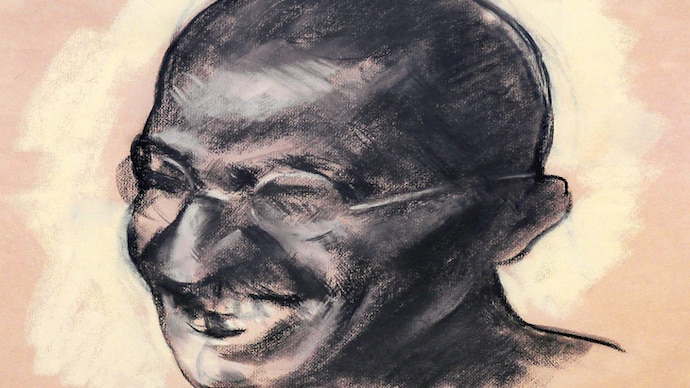Why did Winston Churchill call Mahatma Gandhi a fakir?
The painting, by Ukrainian-born artist Jacob Kramer who spent all his working life in England, was made when Gandhi was at the Second Round Table Conference in 1931.


It now appears that Winston Churchill's "seditious fakir" comment during his wilderness years is linked to an occasion when Mahatma Gandhi posed for portraits at Kingsley Hall in London.
The painting, by Ukrainian-born artist Jacob Kramer who spent all his working life in England, was made when Gandhi was at the Second Round Table Conference in 1931.
During the London visit, Gandhi had invited Kramer to capture his likeness for posterity. The image, made with black and white chalk on buff paper, shows the icon of peaceful protests smiling mischievously, seemingly aware that he had the British Establishment on the run.
In London from September 12 to December 5, 1931, Gandhi stayed at Kingsley Hall and used an office at 88 Knightsbridge during this visit. Here, according to the Mahatma's grandson Gopal Gandhi, a day was allotted to artists and Kramer is said to have made three or four drawings of the Mahatma.
His impressions were published in the Yorkshire Post on January 31, 1948, after Gandhi's death: "I was with him from 10.30 am until 6 pm. It was one of his silent days and neither of us spoke a word. But one did not need to speak to Gandhi to be aware of his personality. A shrivelled little man though he was, he filled that room with an extraordinary spiritual force. He was the most impressive subject I have ever had." Gandhi had vowed to spend every Monday in silence.
Shockingly, around the same time, the United Kingdom's future prime minister Winston Churchill (1940-1945 and 1951-1955) unflatteringly described Gandhi thus: "It is alarming and also nauseating to see Mr Gandhi, a seditious middle temple lawyer, now posing as a fakir of a type well known in the east, striding half-naked up the steps of the viceregal palace, while he is still organising and conducting a defiant campaign of civil disobedience, to parley on equal terms with the representative of the kingemperor."
Significantly, the Council for the Encouragement of Music and the Arts, the predecessor of the Arts Council, had exhibited this portrait during World War II in 1942-43.
A neighbour of Tony and Cherie Blair in Connaught Street, London, and art gallery owner Indar Pasricha recognised Gandhi's signature on this portrait after he found the Mahatma's name misspelled in an auction catalogue in South Kensington. The auction house had not indicated that Gandhi had signed the portrait and Pasricha managed to buy it for a fairly modest few thousand pounds.
Speaking about his latest find, Pasricha said: "I do hope that this remarkable work goes back to India where ideally it should find a home in the Prime Minister's Office as Narendra Modi has been greatly inspired by Gandhiji." He added: "The drawing shows Gandhiji laughing who, like the current Dalai Lama, was always smiling."